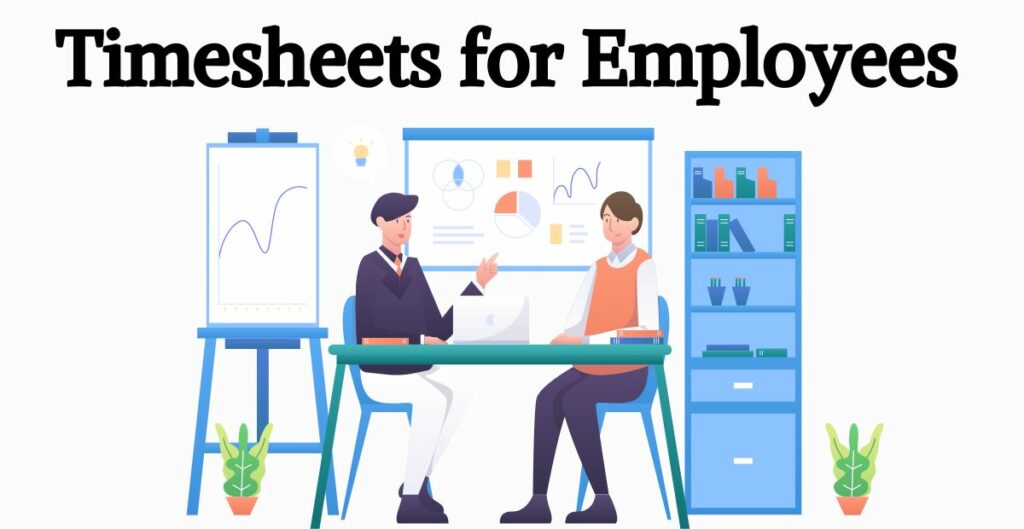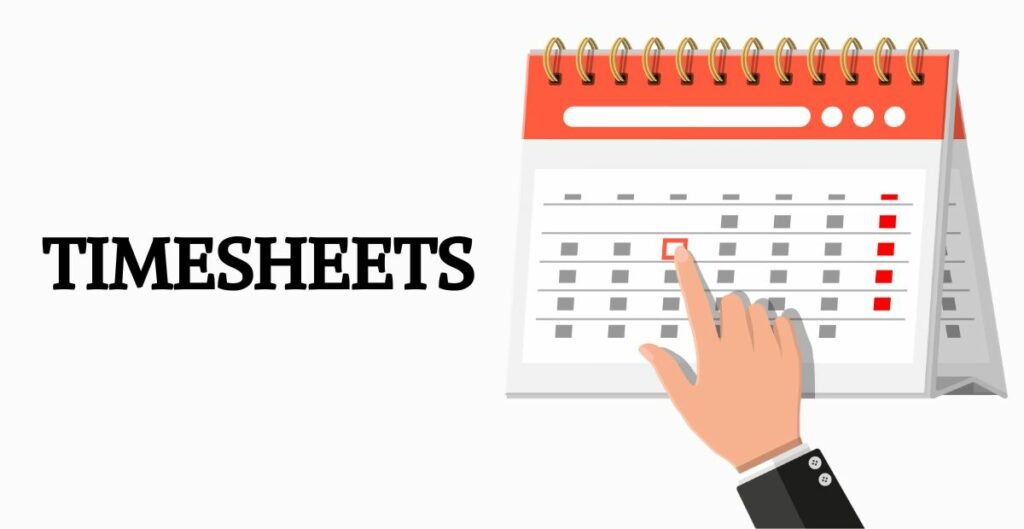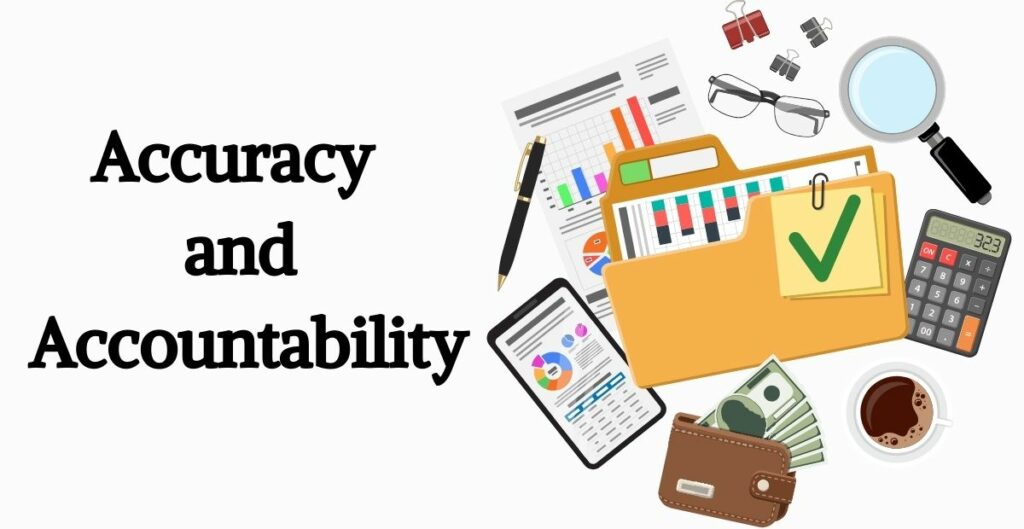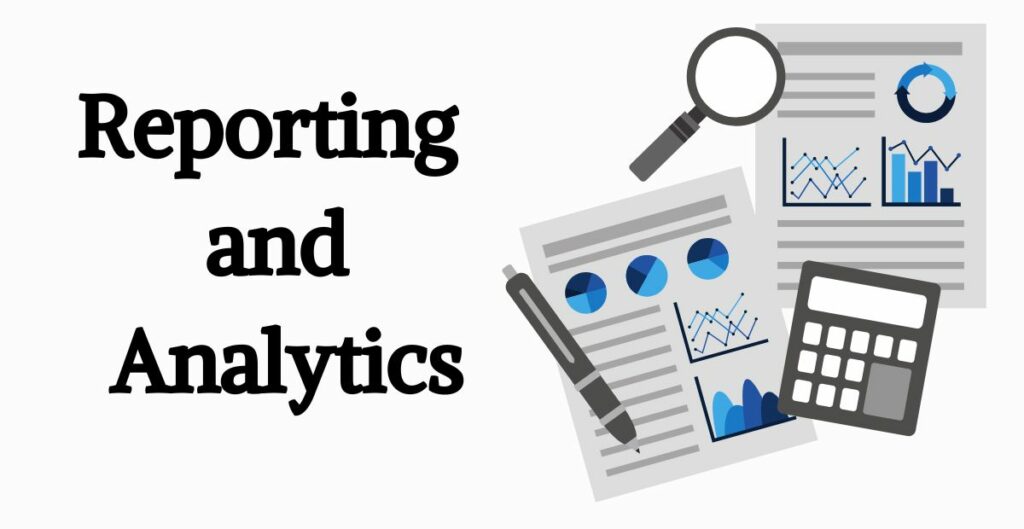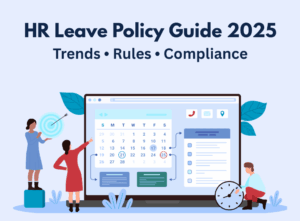Introduction to Timesheets for Employees
In the realm of human resources management, timesheets for employees have turned out to be very important tools for recording the number of hours an employee has worked, the tasks accomplished, and therefore general productivity and progress. Along with the automation of administrative duties, these digital documents help in better understanding, efficacy, and utilization of the workforce and resources. In HR management, timesheets are like the key to the next door. That’s why we will have a look at the most important role they play in employee monitoring and bring to light some positive outcomes they give.
Understanding the Importance of Timesheets for Employees in HR Management
Hours cards record every minute of the employees on various projects (portfolio entities), customers, or tasks. Timesheets for employees are used for proof of time allocation and control. In a dynamic work environment where flexibility and startup trends (remote work) are now becoming very popular, timesheets for employees provide a unified way to oversee and control dispersed teams.
Accurate time tracking provides HR employees with valuable insight into resource utilization, as it lets them identify places where people are inefficient or overused, and they can come up with effective resource management plans. Hence, these insights should be seen as the basis of sound human resource management, as there are issues such as staffing levels, project prioritization, and workflow optimization.
Furthermore, the time sheets are the most important part of following labor law requirements and within contract terms as well. Through careful time tracking, the employers guarantee everyone abiding by the labor laws, compressing wage disputes and reducing the risk of the cases being taken to court.
Benefits of Implementing Timesheets for Employee Tracking
The integration of timesheets for employees into HR management systems yields a host of advantages for both employers and employees:
- Transparency and Accountability: The timesheets for employees play an important role in the development of transparency culture as they grant all employees the opportunity to enter into the work hours spent and activities performed. This accordingly develops trust that in turn inspires people to be accountable for meeting deadlines and honoring their responsibilities properly.
- Accurate Resource Allocation: Managers will enjoy greater control over the workload and that gives them the ability to fix the consequences of overload and bottleneck when they realize that they are there. Timesheet data provides the basis for the management of resources planning and monitoring both within the framework of the project and considering its timing.
- Performance Evaluation and Feedback: Timesheets, therefore, are useful tools to evaluate performance and feedback too. By tracking employees’ time allotment and task accomplishment rates the managers would advise them on what they could do better, to improve their skills where necessary, and when necessary make certain people’s achievements known.
- Billing and Client Management: For companies in the service industry, timesheets for employees are incredibly very mandatory for precise billing and client management. Specifically, detailed time tracking can be found to be significantly important to ensure impartial accounting of labor by billing clients accurately, that is, fairly compensating for the services rendered.
- Compliance and Legal Protection: Timesheets for employees give documentation that serves to show proof of work hours by an employee and which may prevent problems that arise from labor disputes or failure to observe rules and regulations. Through compliance with labor law and by respecting contractual obligations, employers establish their image and minimize the risks of being sued for labor law violations.
Features of Modern HRMS and Payroll Software
As the digital age progresses, High-Tech Human Resource Management Systems (HRMS) and payroll software have reached the stage of development when they serve as all-in-one platforms that automate paperwork and various admin flows, providing a high level of efficiency and authority for employers to manage the workforce. From now on, let’s talk about the main characteristics of contemporary HRMS and payroll software which contains the overview of the whole structure and timesheet integration of those platforms into the HRMS.
Overview of HRMS (Human Resource Management System) and Payroll Software
- Centralized Employee Database: Contemporary HRMS systems come with a store option where employees’ data is stored peripherally which can include personal details, contact data, professional information, and even work records. By providing a single storage for the data, the database facilitates data management and guarantees data synchrony and safety.
- Recruitment and Onboarding: HRMS systems speed up the recruiting and onboarding process by performing tasks like advertising vacancies, screening candidates, and document tracking. These online platforms allow for simplified hiring, eliminate administrative jobs, and do good work in providing new hires with excellent onboarding.
- Employee Self-Service Portal: With top-of-the-line employee self-service portals, employees will now be able to process their personal information, review pay stubs, request time off, and view company policies and benefits. It blurs the boundary between HR and employees with time. On the bright side, the self-service function helps the service staff free some work and enhances employee satisfaction and engagement.
- Performance Management: The HRMS software allows organizations to keep staff outputs on record, establish goals, perform appraisals, and then offer appraisals and coaching to the workforce. This software allows for an elevation of the performance management processes, encourages the sustaining of continuous improvement, and ensures that team objectives are a reflection of the organization.
- Training and Development: To ensure a successful training and development program, employee skills are free to improve through tracking training completion, identifying competency gaps, and suggesting appropriate e-learning resources. With these solutions, companies can develop people, improve the quality of staff performance, and promote the progress of the Company.
Integration of Timesheet Functionality within HRMS Platforms
- Seamless Data Synchronization: Incorporating clocking system compatibility into the human resources management software ensures that the data entered in the timesheet is synced with other HR modules. This integration significantly diminishes the labor on data entry, reduces undesirable duplication of data, and improves data integrity.
- Unified Employee Experience: Organizations do this by employing workers in one platform – HRMS – utilizing the timesheet feature which provides employees with one uniform user experience. A person would be able to access a timesheet for employees where they could submit timesheets for employees and track every detail related to their hours on the same interface they use for other HR activities.
- Streamlined Approval Workflows: One benefit of integrated HRMS timesheets for employees is their ability to assist in smooth approvals through automated workflows. Managers can look through and approve timesheets for employees within the same platform. It avoids duplication of effort in workflow operations since all the relevant information on the submitted proposal is readily available on a single platform.
- Real-Time Visibility and Reporting: The interfacing timesheet feature in the HRMS systems provides real-time visibility into the employee work hours, giving the manager the ability to track the progress on projects and utilize resources as per his requirement, and thus generate accurate reports. Thanks to this real-time insight, companies can make FAIR decisions based on FAIR data which in turn allows them to optimize their workforce management.
- Enhanced Security and Compliance: Integrated HRMS- timesheets for employees not only help with online data management but also improve the accuracy and security of tracking data by centralizing it in a safe HRMS platform. Such data centralization is highly reliable, eases compliance with the requirements, and lowers the data breaches risk.
Automating Timesheets for employees’ Approval Processes
Manual timing card approval is one of the critical areas in modern workforce management. It enhances time optimization, and consistency and reduces the errors in payroll processing. One of the main benefits of workflow automation is that it helps in the easy submission and approval of timesheets. Therefore, timesheet information can easily be submitted to the manager or leaders of their organization.
Workflow Automation for Timesheets for employees Submission and Approval
- Electronic Submission: Automatizing decreases the necessity of job cards or paperwork and digitalizes reporting timesheets for employees. This online submission process of work hours not only makes it simple for recording, but also lessens the chances of mistakes, which are common, and speeds up the approval process.
- Notification System: The automated systems can inform the timesheets for employees with the notification that they need to follow the deadline for the submission of the timesheets for employees within a given period. These tips aid in avoiding late submissions and the long and tedious backlogs that often accompany the process.
- Routing and Escalation: Workflow automation tools allow timesheets for employees to move as per the well-defined rules and hierarchy (which are) in the approver’s hands. On the other hand, if there is an unapproved timesheet after a particular time, a higher authority can be escalated, and the approval request can go to, this ensures that the timesheet will be approved quickly.
Customizable Approval Hierarchies to Suit Organizational Structures
- Conditional Approvals: Automation software provides companies with the option of setting draft approvals as conditions for the budget, client billing rates, or overtime threshold. Time sheets also which meet given criteria get approved automatically and where multiple cases are highlighted for special review.
- Dynamic Approval Routing: Adjustable approval ladders would resolve the routing issue on the go, based on the organization’s changing requirements or project nature. Such as modification of the approval path when work is demanding will be made to facilitate engaging temporary workers and bringing on board additional project managers.
- Audit Trails and Compliance: The system offers automatic approval timesheets for employees which not only track all operations in the process but also all the steps of the approval workflow are documented for the compliance and auditing of the finance sector. This advancement in communications makes it possible to trace all the decisions and approvals for regulatory compliance purposes.
Enhancing Accuracy and Accountability
The organization must not transgress the rules of efficiency and compliance at all times, as accuracy in time tracking is paramount. Implementing real-time monitoring of employee hours worked and dealing with timesheet fraud and inaccuracy of the timesheets for employees shall facilitate the business to maintain integrity in its workforce management process.
Real-Time Monitoring of Employee Hours Worked
- Automated Time Tracking Systems: As a result of the use of automated time tracking systems, one can be able to observe all the hours worked by employees through real-time monitoring. Such systems make a real-time recording of the actual time data that comes up; therefore, any employee activities can be highlighted quickly and productivity levels determined instantaneously.
- Integration with Workforce Management Tools: Combining time tracking systems with specific workforce management tools makes it easy for employers/supervisors to track the number of hours worked together with some other employment parameters. A perceptive perspective allows for the taking of immediate steps and allocation of resources to settle on the evidence.
- Mobile Accessibility: These time-tracking apps situated on mobile devices have pushed workers to even report their working times from wherever and at whatever time they are. It guarantees that employees engaged in remote and field-based work are tracked down accurately, thus elevating informational transparency and accountability within the employee population.
- Alerts and Notifications: Alerts and notifications are supposed to be implemented within the time tracking platform to direct the managers when something seems to be off or different from what they anticipated in terms of the number of working hours. Such proactive alerts are timely and allow for immediate intervention and correction that loads of accurate time tracking bears.
- Analytics and Reporting: Complex analytics and reports would also be covered, which can help each manager to have a detailed look at how their staff is utilizing the subsidized time. Analyzing those data provides insight into the workforce scheduling, its tasks, and the efficiency strategies to manage productivity.
Addressing Issues of Timesheets for Employees’ Fraud and Inaccuracies
- Strict Authentication Measures: Biometric verification or multi-factor authentication measures can secure the access system and thus no unauthorized access or manipulation of timesheets for employees can take place.
- Audit Trails and Timestamps: All activity times afforded with global records and respective timestamps in the time-tracking systems are credited to complete transparency which in turn is essential in safeguarding effective management of human resources. The recorded trials can serve a preventive purpose to the extent that they discourage cases of fraud and also facilitate the investigation process in the event of irregularities.
- Regular Audits and Reviews: Periodical auditing and scrutinizing the timesheets for employees’ data will reflect time inaccuracies and fraudulent activities which will help to perceive the potential of fraud or inaccuracies. The hours recorded by employees may be compared to the work schedules, project timelines, or surveillance footage for verification purposes.
- Employee Training and Awareness: Through training and awareness programs the employees should be given proper clues on the need to keep time sheets honest and the consequences of poor timekeeping are not overlooked. This helps in the creation of a culture of morality and accountability within the organization.
- Implementing Checks and Balances: Proper checks and balances in the timesheet approval process through dual authorization or reconciliation periodically would lessen the risk of any false working hours escapes.
Custom Reporting and Analytics
Custom reporting and analytics are keys to the toolchain for a company to take control of its workforce data and make it actionable. Through the provision of custom attendance records, realization of work hours and use of data to create more cost-efficient staff management approaches businesses can raise output levels, which leads to better business performance.
Generating Custom Reports on timesheets for Employee Attendance and Work Hours
- Attendance Summary Reports: The reports could be customized to show a summary of the data on employee attendance and preferences, such as total work hours, absences, lateness, and early departures. These reports help managers to know fluctuations that come in attendance, then quickly deal with issues that arise, and they can make sure that workers abide by the company rules.
- Work Hours Distribution: Reports that consist of specific tasks that are discussed by different categories, including projects, departments, or clients, would be considered custom reports. As a result, the executives can evaluate this data to determine where costs are too high and where workload must be balanced to have optimal resource allocation.
- Overtime Analysis: Custom reports on overtime hours help an organization develop overtime trend data, identify the causes of overtime working, and evaluate how excessive overtime impacts employee productivity and well-being. This kind of analysis is directed towards the formulation of the measures on staffing guidelines, workload distribution, and remuneration.
- Leave Balances and Usage: Through employee leave balances and usage reports, HR can have a complete idea about the availability of the timesheets for employees, the tendency of absenteeism, and in turn gaps in the team. With this indication, supervisors can forecast staff and leave management needs, maintain the right amount of personnel, and maintain an effective workforce.
- Compliance Reporting: There can be generated customized reports that are going to help organizations monitor compliance with U.A.W. regulations, labour laws, and their internal log based on work hours and attendance. The reviews minimize compliance risks that might lead to penalties or uneven conduct of the employees.
Utilizing Analytics to Optimize Workforce Management Strategies
- Demand Forecasting: Ashley, historical workforce information and business trends have to be studied by organizations to forecast future demand for labour and whether they can change staffing levels, timetables, and resource allocation in advance to meet the predicted need.
- Performance Metrics: Analytics enable corporations to track the metrics of workforce efficiency, such as productivity, quality utilization, and efficiency. Providing this managerial function is supported by identifying strong and weak performance as well as implementing specific support to improve employees’ performance and outputs.
- Skill Gaps Analysis: Workforce competency and skill set analysis will allow organizations to come up with ready-to-fill positions where skill gaps still exist. Through planned training and skilled development, businesses can improve their workers’ capabilities, push forward innovation, and, in the end, outperform their competition.
- Workforce Diversity and Inclusion: Timesheets for employees have analytics that offer you information on workforce diversity, employee demographics, and inclusion statistics. Through the monitoring of diversity and inclusion performance, organizations can identify areas that can be utilized to develop a more accommodating workplace culture, thus taking advantage of the increased performance brought by diverse perspectives.
- Predictive Analytics: Employment of decision support systems, an organization will apply predictive analytics models that will help detect future workforce tendencies like turnover, attrition, and talent shortages. Through the process of identifying risks and opportunities in advance, businesses can efficiently develop strategic approaches ahead of time and then handle the risks while at the same time exploiting the emerging opportunities.
